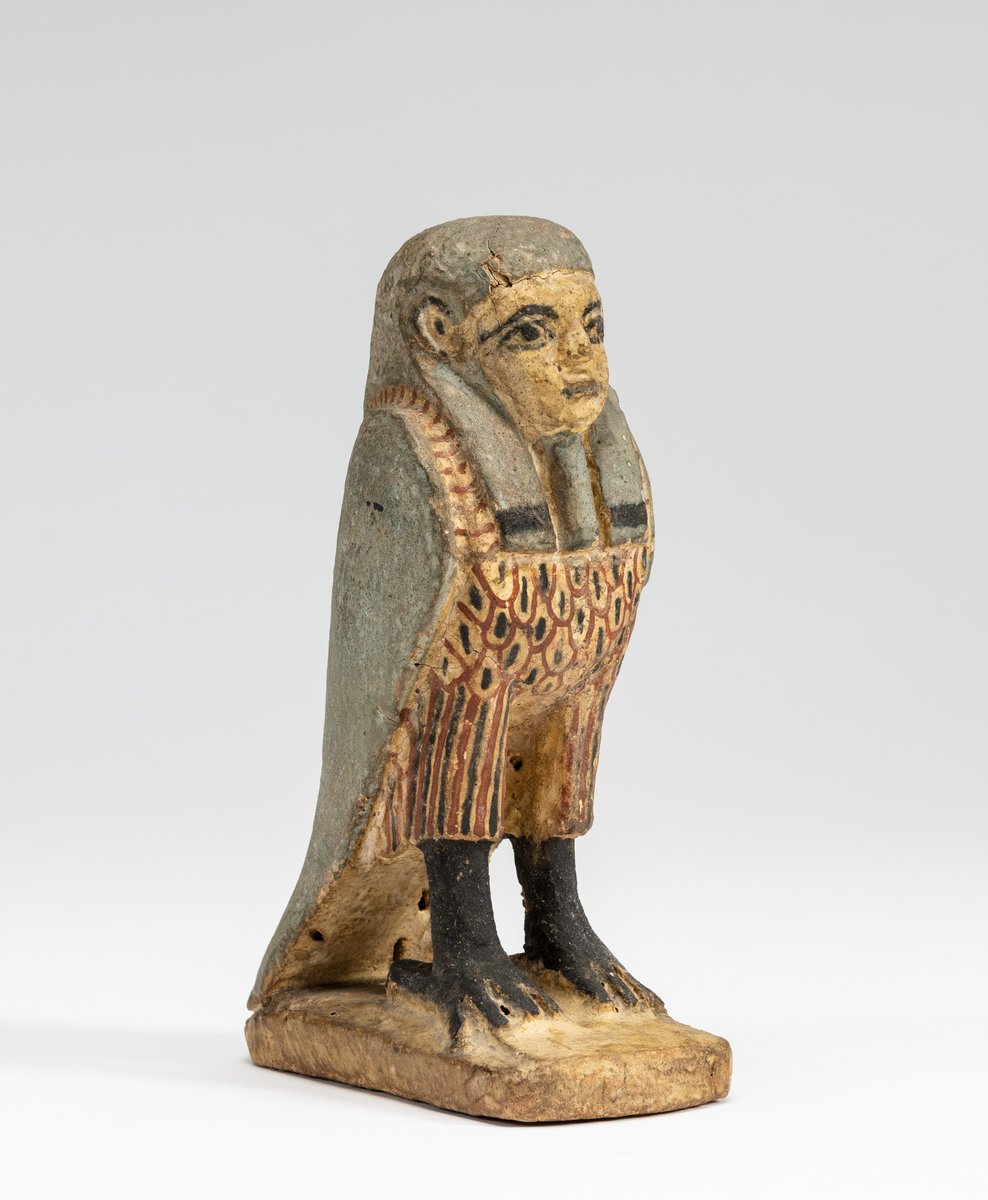
Ba-bird
Egyptian Art
| Findspot | Gamhud, Egypt |
|---|---|
| Date | 2nd–1st centuries B.C. |
| Object type | tomb equipment |
| Medium, technique | Linen, paint |
| Dimensions | 117.2 x 35.3 cm |
| Inventory number | 51.2119 |
| Collection | Egyptian Art |
| On view | Museum of Fine Arts, Basement Floor, Ancient Egypt, Funerary beliefs |
In 1936–1937, following their transfer from the Hungarian National Museum to the Museum of Fine Arts, the coffins excavated from the middle Egyptian cemetery of Gamhud were opened and their contents were removed. Some of the coffins yielded mummies covered by cartonnage ensembles, and others by painted linen shrouds such as this one.
The decoration of this shroud was executed according to traditional Egyptian conventions, as were all the known Gamhud shrouds. The upper part shows the geometric design of the broad collar (wesekh), which also appears on coffins, while below is the usual scene with a kneeling goddess, who is here identified by the short accompanying text as Isis. She wears a sun disc on her head and spreads her wings protectively across the body of the deceased. One vertical and four horizontal lines of text divide the space below into six compartments, which contain the depictions of the four Sons of Horus whose task was to protect the deceased, as well as those of the two goddesses, Isis and Nephthys on the right, who mourn the deceased identified with Osiris. The vertical column contains an erroneous offering formula for the deceased whose name was left out from the inscription. Underneath is a representation of a pair of sandals enabling the deceased to leave the tomb and also to tread upon his enemies symbolizing the forces of chaos, who were considered as threats to cosmic order and thus to the afterlife rebirth of the deceased.
This record is subject to revision due to ongoing research.